Arts and crafts didn’t end after elementary school like I expected they might. I put some basic arts and crafts (and graphic design) skills to work almost every month at the library (File under: “things they didn’t teach you in library school”). We have three main display tables, plus a set of shelves used seasonally (teen summer reading prizes in the summer, holiday CDs in November and December), and we change the displays every month. Rob’s awesome displays challenge the rest of us to up our game!
What’s the purpose of library displays? They convey information; they offer entertainment or humor; they ask passers-by to stop and engage (many of our displays have interactive elements); they highlight parts of the library collection; and they give people something to look at while they wait in line.
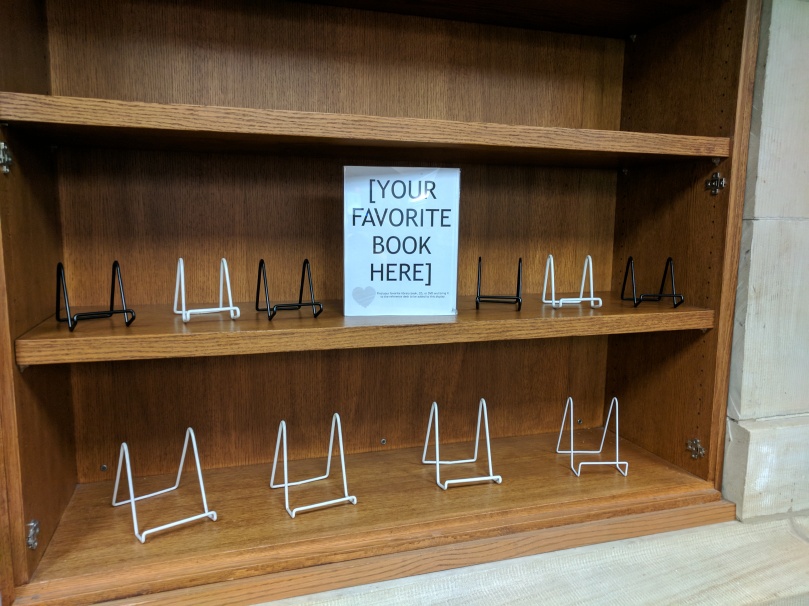
This is the simplest possible display: empty book stands with a sign that reads “[YOUR FAVORITE BOOK HERE]” and directions for how to add a book to the display. This display encourages engagement and participation by asking library users to recommend books (or movies or music) to each other.
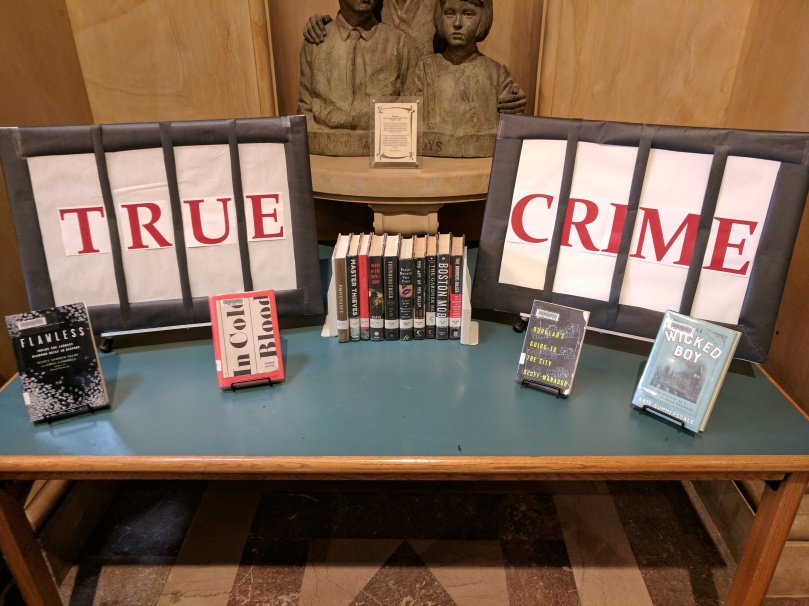
Sometimes displays feature a specific area of the collection; in this case, I highlighted our true crime books. It was very easy to pull books for this display, as they’re helpfully grouped in 364 (for Dewey nerds). I was pleased that I was able to pull off my vision of getting the words “TRUE CRIME” to look as though they were behind bars while still being legible. (The stone statue behind the table is not part of the display.)
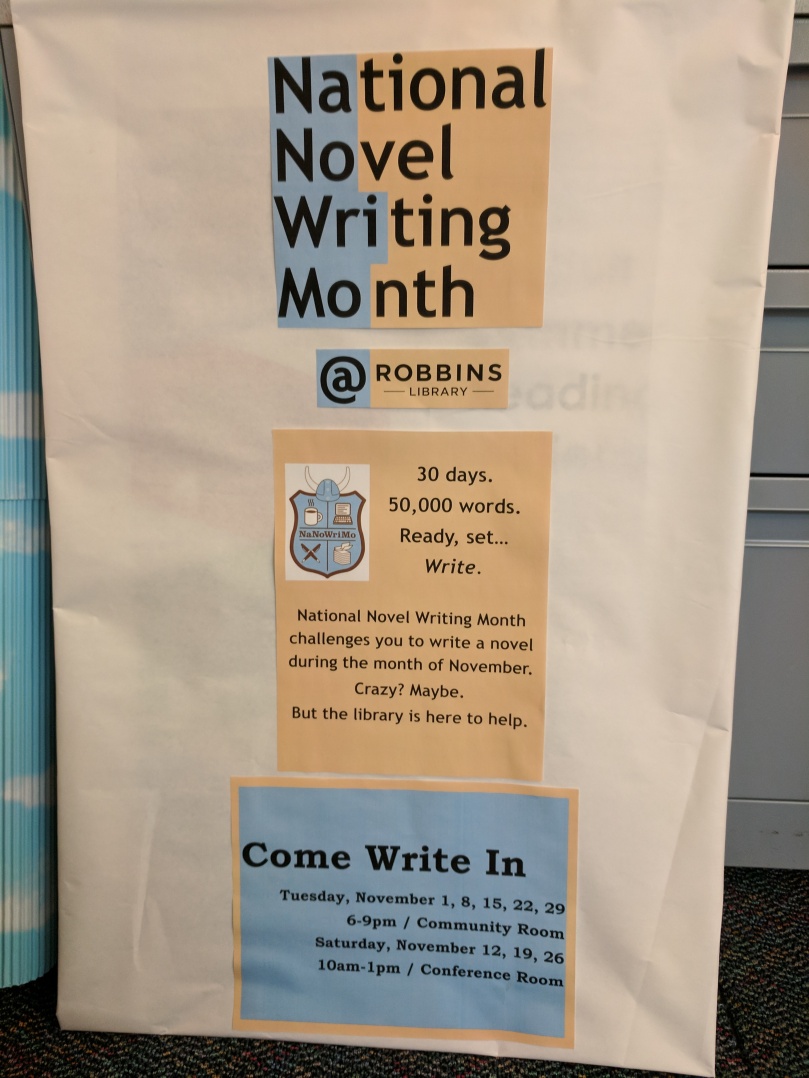
Some displays are annual; this one is part of last year’s National Novel Writing Month display. We hosted “Write-Ins” throughout the month. The display table included the schedule of write-ins and a word count calendar, along with some library books about writing, and the official NaNoWriMo poster for that year.
Not everyone knows what NaNoWriMo is, so I wanted to find a way to include both the whole name and the nickname; I achieved the effect by changing the background color behind the text. (I made this in Publisher, which gives the user more control and precision than Canva, plus it has the eyedropper tool that allows you to pick colors from a graphic or image and use that exact color for text or background; I used colors from the one of the NaNoWriMo graphics. Canva has other strengths, though!)

I always put up a display for Banned Books Week at the end of September; this one features a poster, a quote from the ALA Code of Ethics, an infographic from the ALA Office of Intellectual Freedom, some “I read banned books” buttons that I made, a small fake bonfire, and – my favorite interactive element – the “books change lives” jar, with comment cards and a cup of pens. The week after Banned Books Week, I pull the responses from the jar and write a blog post for the library.
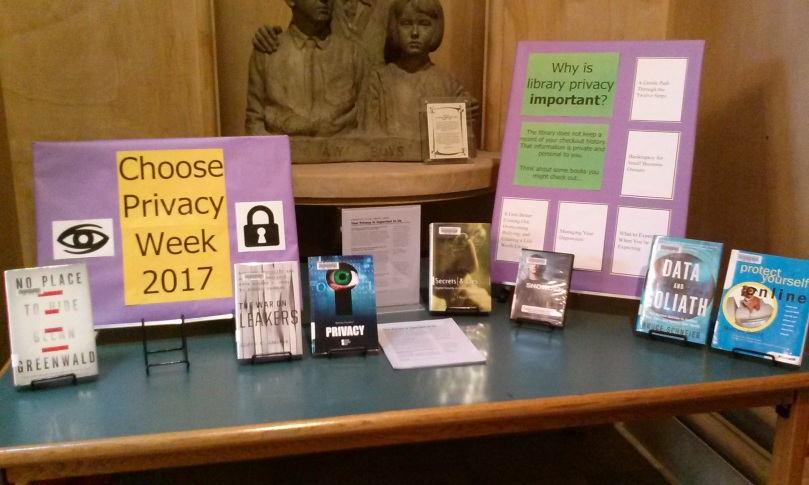
Choose Privacy Week is another annual display, in the first week of May. For this display, I designed two poster boards using simple, bold graphics and bright colors. The poster on the right in the photo that asks “Why is privacy important?” answers its own question in part by including the titles of library books that people might not want others to know they had checked out, from Managing Your Depression to What to Expect When You’re Expecting to It Gets Better.
I also included a fact sheet from ALA and books and DVDs about privacy from the library collection. People are always welcome to take library materials from the display to check out.
For Choose Privacy Week in 2015, I used a series of “True or False?” questions about privacy with answers under a flap of paper, so patrons were encouraged to interact with the display to get the answers.
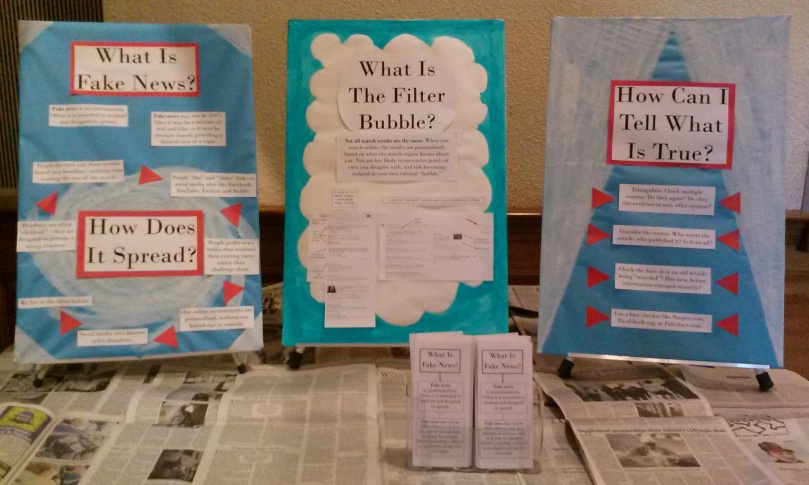
I started off the year with a “What is fake news?” display. Instead of using a tablecloth or butcher paper to cover the table, I used old newspaper. I put together three informational poster boards (a bit more text-heavy than usual), and included copies of a pamphlet with information about “fake news”: what is it, how it spreads, how to avoid spreading it yourself. (Basically, how to be a responsible information consumer. A PDF of the pamphlet is available here.)
I updated one of the boards (“What is the filter bubble?”), as I will be bringing them to a conference and a class later this month.
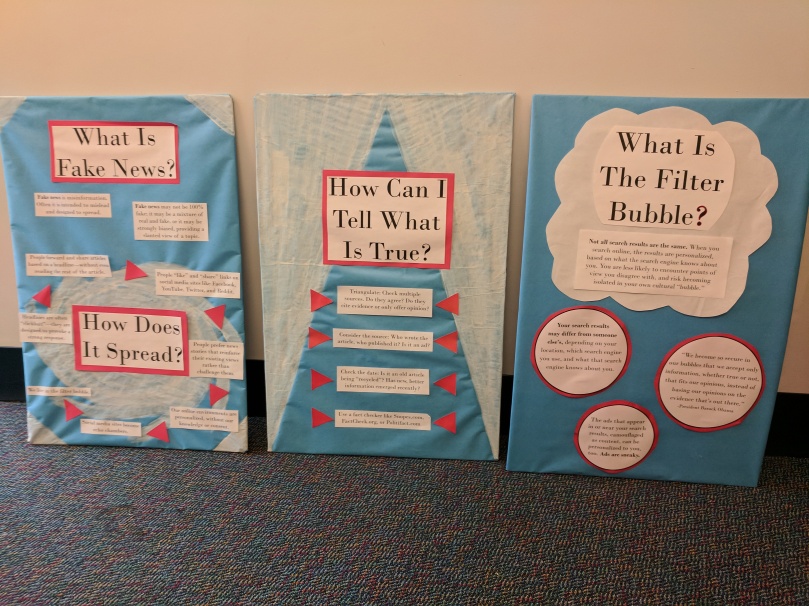
None of these are particularly flashy – Rob might say I don’t use enough glitter, for one thing, and I could use more 3D objects and props – but I hope they get the point across. Do you make displays for your library? What are some of the ones you’re proud of? What materials and techniques do you like to use?

[…] work of program planning, collection development, and creating displays largely takes place during our off-desk hours (the time that we are not at the reference desk), […]